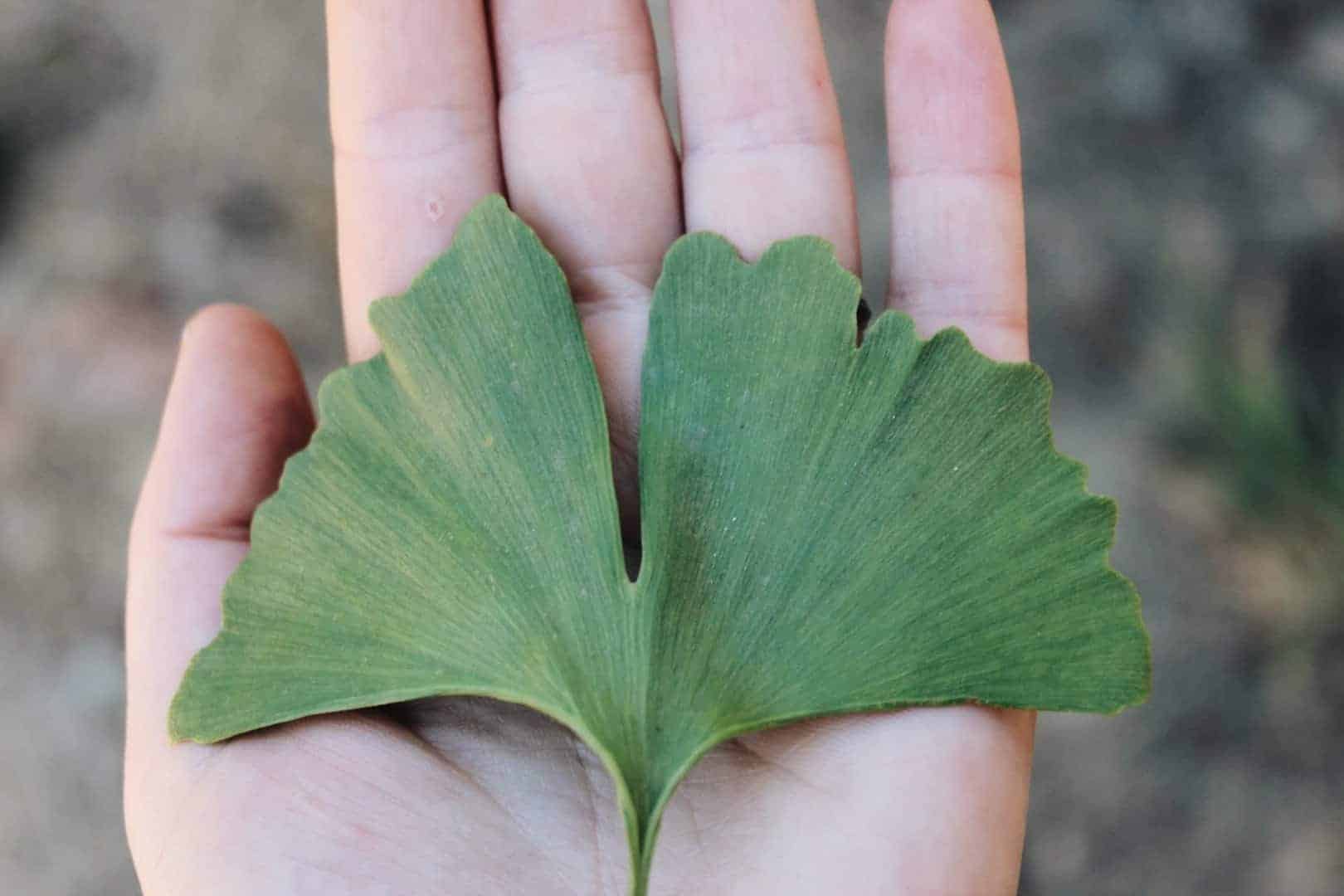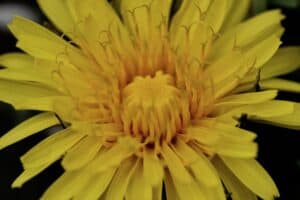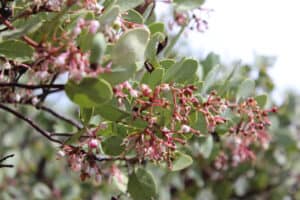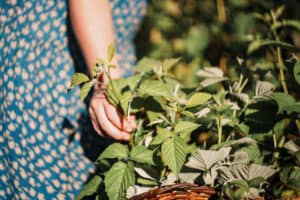Ginkgo is famous for its ability to boost your memory, focus, and concentration . . . but if that’s true, why didn’t I feel any of these results when taking some Ginkgo tincture?
The truth is, there’s a big misunderstanding about Ginkgo and the way it works. Understanding the Ginkgo myth makes the difference between getting those brain-boosting properties versus drinking a horrible tasting tea or taking a standard tincture that doesn’t do much at all.
By understanding the science behind Ginkgo, the myth, and the truth around this plant, you can harness its medicinal properties to get the benefits you’re looking for.
In today’s blog post, you’ll learn:
- Why Ginkgo leaf isn’t the traditional medicine you think it is
- A scientific Ginkgo product called EGB 761 and how it made this herb famous today
- Ginkgo’s medicinal properties and why they make it the ultimate brain herb
- How to take Ginkgo so it actually works
- The top herb-drug interactions with Ginkgo you should know about
Table of Contents
Ginkgo biloba has long been celebrated as an ancient remedy said to boost brainpower, improve cognition, and help with memory. But is its legendary reputation really true?
There are certain herbs that everyone seems to know about, even those outside the health or herbalism world, and Ginkgo is one of them. This plant skyrocketed in popularity and became a trendy remedy around the world. With all the buzz, Ginkgo also attracted a lot of scientific attention—some of the research is solid, and some, well, not so much.
There’s a major misconception about how Ginkgo works, so let’s start by addressing the elephant in the room: Ginkgo leaf is not an ancient medicine. While this tree has been used for centuries in Asia, its modern applications are different from its traditional ones.
In Chinese medicine, it was the Ginkgo nut, not the leaf, that was consumed as both food and medicine. Even then, it wasn’t a major remedy and had to be processed properly due to its mild toxicity. Essentially, Ginkgo nuts were treated as a medicinal food and a respiratory remedy, not a brain booster.
Although Ginkgo is now known for supporting cognition and brain health, the nut was actually used to treat dampness in the lungs, particularly for damp, wet, phlegmatic coughs. As for the leaf? There’s no historical evidence that it was used medicinally in traditional practices.
The use of Ginkgo leaf didn’t emerge until the 1960’s. So, if we’re being honest, calling it a “traditional” remedy is a bit of a stretch because it’s less than 100 years old.
What’s even more interesting is that when Ginkgo leaf broke into the commercial market, a very specific formulation was used: A specific, highly concentrated extract developed by a German phytopharmaceutical company, branded as EGB 761.
Soon after, a French company introduced it to the marketplace on a larger scale. But here’s the key point: much of the research on Ginkgo’s effectiveness wasn’t done on the Ginkgo leaf you’d find growing in the wild—it was done on EGB 761, which is a super-concentrated extract.
EGB 761 is incredibly potent. It’s made with a 50:1 concentration, meaning 50 grams of Ginkgo herb were used to create just 1 gram of extract. For context, most herbal tinctures use a ratio of 1 gram of herb to 3-5 milliliters of liquid. So, creating a 50:1 extract is no small feat—it requires a massive amount of plant material, time, and patience, making it far beyond the reach of most home herbalists.
While Ginkgo biloba is now famous for supporting cognitive function, it’s important to understand its true history and how it’s been used—both traditionally and in modern times. The Ginkgo leaf’s role as a brain health superstar is relatively new, and much of the research focuses on highly concentrated extracts, not the plant in its natural form.

Ginkgo’s Medicinal Properties
Ginkgo is primarily a circulatory stimulant, but it works differently than other well-known herbs in this category. Most circulatory stimulants, like Cayenne pepper, Ginger, and Garlic, are pungent, warming, spicy, and aromatic. They increase circulation by driving blood to the skin’s surface, and are hot! Ginkgo, however, is unique because it stimulates circulation through vasodilation.
Instead of driving blood through the system, Ginkgo opens up the capillaries and blood vessels, allowing more blood to flow freely. This leads to increased oxygen and nutrient delivery to your cells, while also aiding in the removal of metabolic waste.
Ginkgo specifically dilates the blood vessels in the brain and periphery (capillary beds), making it helpful for conditions like cold hands and feet, Raynaud’s syndrome, diabetic neuropathy, and atherosclerosis. Its ability to dilate blood vessels in the brain, and therefore delivering more oxygen and nutrients, is Ginkgo’s defining and unique property unmatched by any other herbs we know about today.
This herb isn’t just a circulatory stimulant; it’s also neuroprotective. It has been shown to protect neurons and neural tissues from oxidative damage, a key factor in many degenerative diseases, especially those linked to aging. Oxidative damage accelerates neurological aging, potentially leading to conditions like dementia and Alzheimer’s.
Ginkgo’s neuroprotective qualities extend beyond age-related diseases, helping with other neurological issues like Parkinson’s, vertigo, and stroke recovery. Its ability to protect neurons while improving blood flow makes it a powerful plant for cognitive health as we age.
Finally, Ginkgo is nootropic, meaning it enhances cognitive function. This is a result of its combined circulatory and neuroprotective effects. By increasing blood flow to the brain, protecting neurons, and reducing oxidative damage, Ginkgo can help improve memory, focus, and mental clarity. Ginkgo is renowned for supporting cognitive health, especially short-term memory, focus, and mental clarity. While it’s often associated with aging, its benefits apply to anyone looking to enhance brain function.
Thanks to its circulatory benefits, Ginkgo is also helpful for conditions like tinnitus (ringing in the ears) and various eye problems. This is a big thing it can help with since many degenerative eye issues, such as glaucoma, macular degeneration, cataracts, and diabetic retinopathy, are rooted in poor circulation. The capillaries that nourish the eyes are tiny, and when blood thickens—often due to high blood sugar—circulation to these capillaries is compromised. Ginkgo helps by opening the capillary beds, reducing oxidative damage and inflammation, and improving eye health. That’s why you’ll often find Ginkgo in eye health formulas at supplement stores.
The Ginkgo Myth
So what’s the Ginko myth? Aside from the fact that Ginko leaf is not a traditional remedy, many people believe that dried Ginkgo leaf, used as a tea or a standard tincture using a 1:5 ratio of plant part to menstruum, will deliver all these amazing benefits. However, the reality is more complex. While you might expect a simple Ginkgo tea or tincture to improve cognition, the truth is that only highly concentrated extracts—like the 50:1 EGB 761 extract—are proven to have these effects.
As someone who’s taken Ginkgo to improve my focus and concentration, I’ve experienced this myself. After using Ginkgo tinctures for a while, I didn’t notice much of a difference. When I looked into it, I discovered that Ginkgo’s key compounds, ginkgolides (the most active and studied components), aren’t water-soluble, meaning they can’t be extracted in a tea! What this means is that Ginkgo leaf teas are essentially useless as an herbal medicine. Not to mention it’s a rather unpleasant tasting tea, so compliance is a major issue as well. While ginkgolides are alcohol-soluble, even tinctures made at home don’t contain nearly the concentration needed for a noticeable effect for any of Ginkgo’s medicinal properties.
The commercially available standardized extracts are produced at a concentration beyond what most herbalists can create at home. These extracts require specialized equipment and processes, far more advanced (and expensive) than standard tinctures. That’s why many Ginkgo tinctures don’t work—or at best only provide minimal benefits at relatively high doses.
The common Ginkgo extract doesn’t work, not because it doesn’t have the potential to work, but because a different dosage and medicinal preparation is needed for it to work.
One thing I learned from one of my herbal mentors, David Winston, is that the dosage and duration of Ginkgo use make all the difference. Research comparing studies with impressive results to those with negligible effects revealed that doses below 120 mg didn’t work well, and shorter durations (less than 12 weeks) were not long enough. The studies that showed real benefits used doses of 240 mg or more, taken for 22 weeks or longer. In other words, for Ginkgo to truly work, you need to take it at a higher dose, for a longer period. These amounts are for the standardized extract, NOT your basic tincture.
Despite all the research on Ginkgo for conditions like dementia, Alzheimer’s, stress, and cognitive impairment, it’s important not to take every study at face value. If a study concludes that Ginkgo doesn’t work, it may simply mean the dosage or duration was insufficient. Always remember: the efficacy of Ginkgo depends on taking a standardized extract, at a high dose, over a long period.
If you want to experience the full benefits of Ginkgo biloba, look for a standardized extract, take 240 mg or more daily, and commit to using it for at least five months.

Contraindications and Considerations
While Ginkgo offers many benefits, there are important warnings to be aware of, especially when using standardized extracts at higher doses for extended periods.
First and foremost, Ginkgo has anticoagulant effects, meaning it can act as a mild blood thinner. While it’s not entirely clear whether this thinning effect reduces blood viscosity or solely dilates blood vessels, the general recommendation is to avoid using Ginkgo in conjunction with blood-thinning medications like warfarin or other anticoagulant or antiplatelet drugs. This is an important herb-drug interaction to be mindful of.
Additionally, since Ginkgo increases blood flow to the head, caution is advised for people prone to vascular headaches, particularly vasodilative headaches. In these cases, where blood vessels are already dilated, Ginkgo may worsen the condition by further expanding the blood vessels, leading to a more intense headache. However, for vasoconstrictive headaches or tension headaches, particularly those accompanied by heat, Ginkgo can be helpful. Its cooling properties, along with its ability to dilate blood vessels, can provide relief in these specific scenarios.
It’s important to understand that Ginkgo is not a catch-all remedy for every type of headache. Rather, its application depends on the underlying cause of the headache and the person’s individual condition. If 10 people have headaches and 8 of them are dealing with vasodilatory headaches, Ginkgo might make their symptoms worse. However, knowing that Ginkgo dilates blood vessels and is a cerebral circulatory stimulant helps you determine when it’s the right time to use it for headaches.
There has been speculation that Ginkgo might act as a monoamine oxidase inhibitor (MAOI), but this is untrue. Additionally, Ginkgo does not negatively interact with selective serotonin reuptake inhibitors (SSRIs), commonly prescribed for depression.
Mythbusting Ginkgo
Ginkgo is a fascinating plant due to its unique combination of cooling and circulatory stimulant properties. This rare pairing means that while Ginkgo enhances circulation, it remains energetically cooling, which is an unusual and valuable pairing.
Remember that Ginkgo leaf works, but as long as you use it correctly. If you’ve ever brewed Ginkgo tea or used a tincture and it didn’t work, now you know why. Ginkgo’s real benefits come from standardized extracts that have been researched and concentrated for potency. Without these extracts, the effects you experience will likely be barely noticeable.
When it comes to administering Ginkgo, especially to the elderly, capsules or tablets are often the most effective option. Compliance is generally higher with these familiar forms, since taking a new tea or tincture can feel strange or overwhelming—especially for those with cognitive impairments. The taste of a tea or tincture can also be off-putting and lower compliance, which is why I find that the standardized extract in pill form is often the best choice for the elderly.
While I’m not the biggest fan of phytopharmaceuticals nor standardized extracts and usually prefer whole plant extracts, Ginkgo is one exception to that rule. If you want to experience the true benefits of Ginkgo, a standardized extract is the way to go. Now that you know the truth behind Ginkgo leaf, you can find a product that will help you find the results that you’re looking for—and start remembering where you left your keys.








